Where is the market headed?
A day marked by disaster—not so much in the markets, but in the tragic airline crash that occurred today. While the markets weren’t directly impacted by this event, volatility persisted due to renewed complications on the tariff front and broader concerns weighing on sentiment. Indices continued to struggle, seemingly dragged down by internal pressures and a lack of positive triggers.
Market Overview
Nifty slipped nearly 1% on the index, closing the session at 24,888.
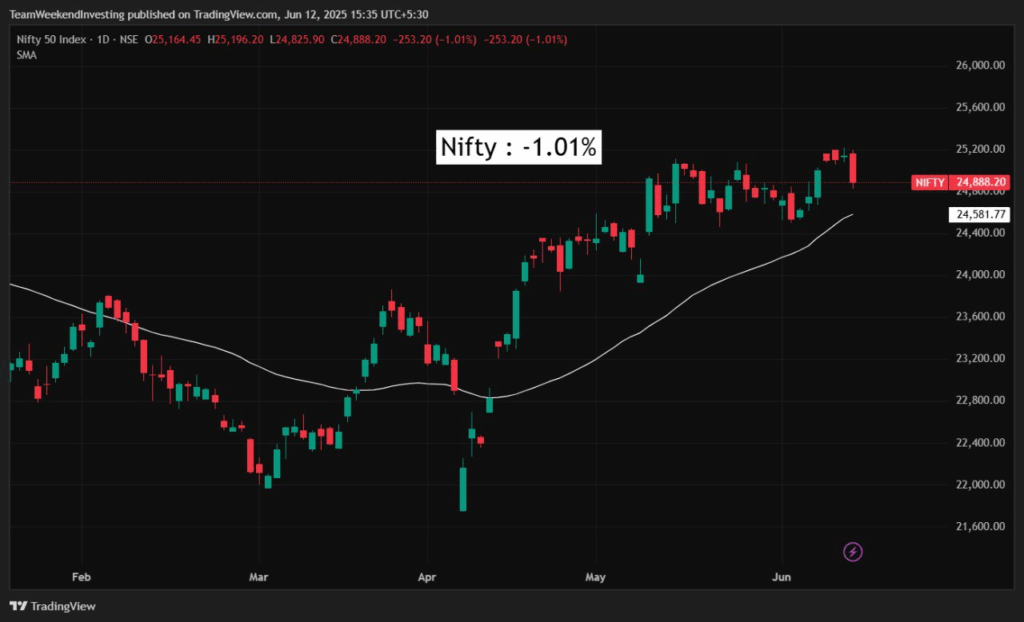
Nifty Next 50
Nifty Junior witnessed a steeper decline, ending the session 1.8% lower.

Nifty Mid and Small Cap
The mid-cap segment has now retraced a couple of thousand points from its recent peak, closing 1.54% lower. This decline effectively wiped out gains from the past four to five sessions.
Similarly, the small-cap space saw a cut of 1.44%, erasing nearly three sessions’ worth of gains.
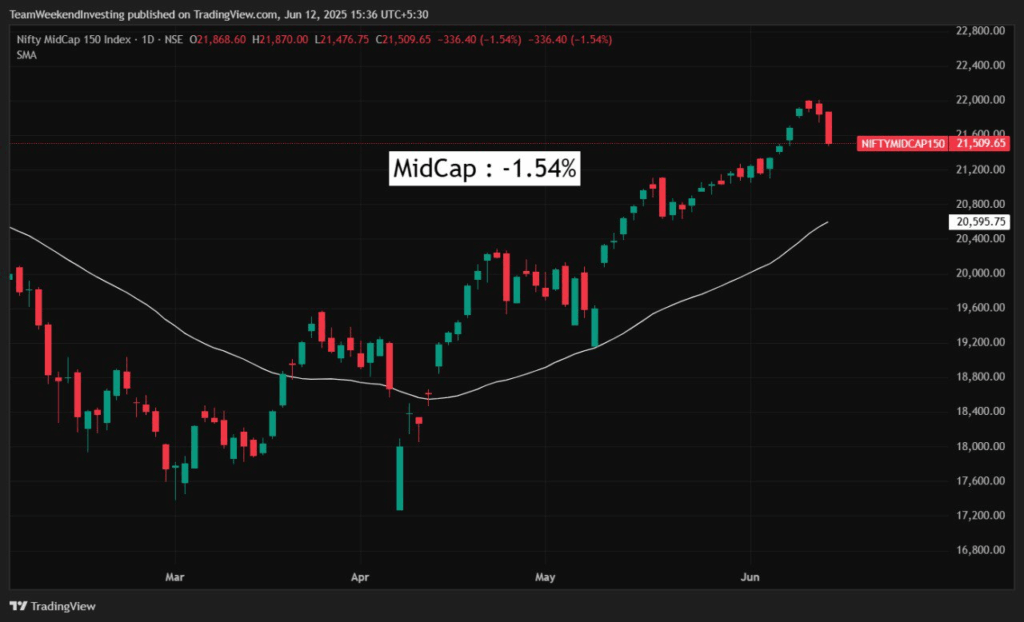
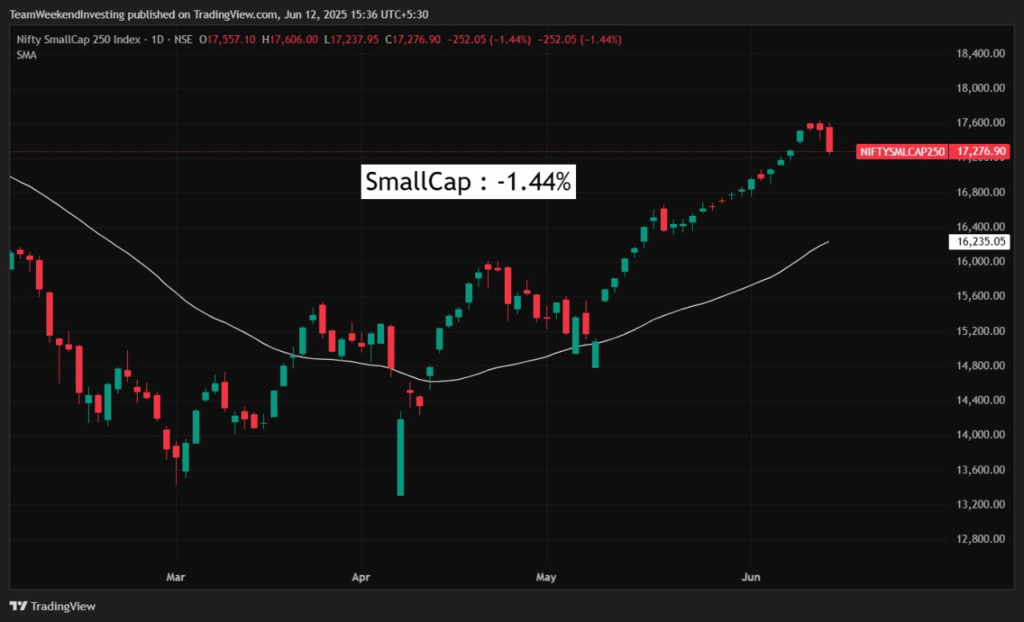
Bank Nifty
The last four sessions have been closely tracked, particularly in the Nifty Bank segment. The index has now returned to a familiar range seen earlier, indicating the need to rebuild its structure before any meaningful upward movement can resume.
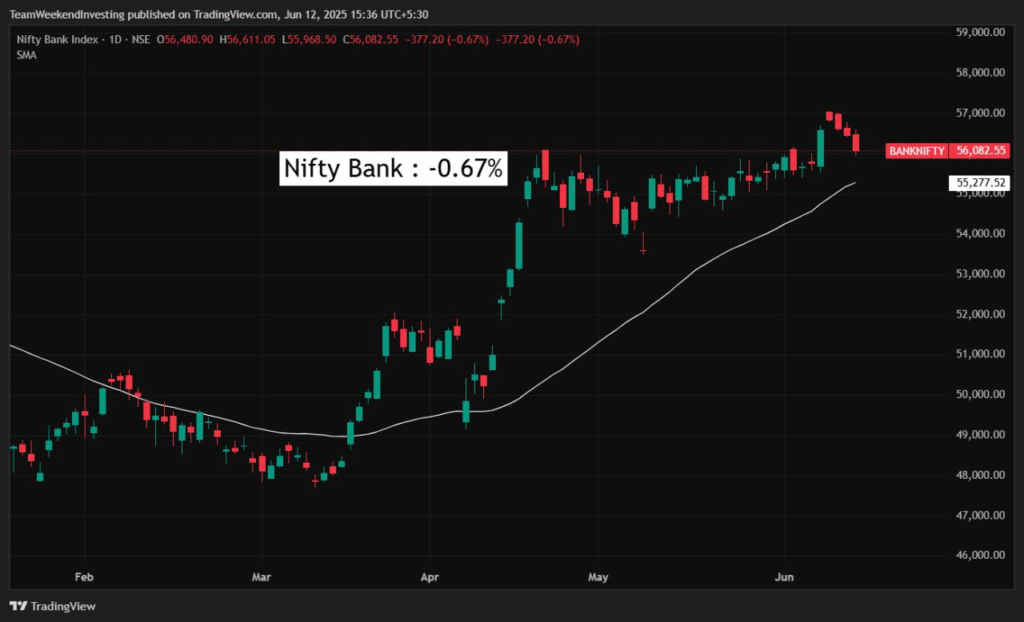
GOLD
Gold continued its upward momentum, rising another 0.5% today and reaching approximately ₹9,800 per gram.
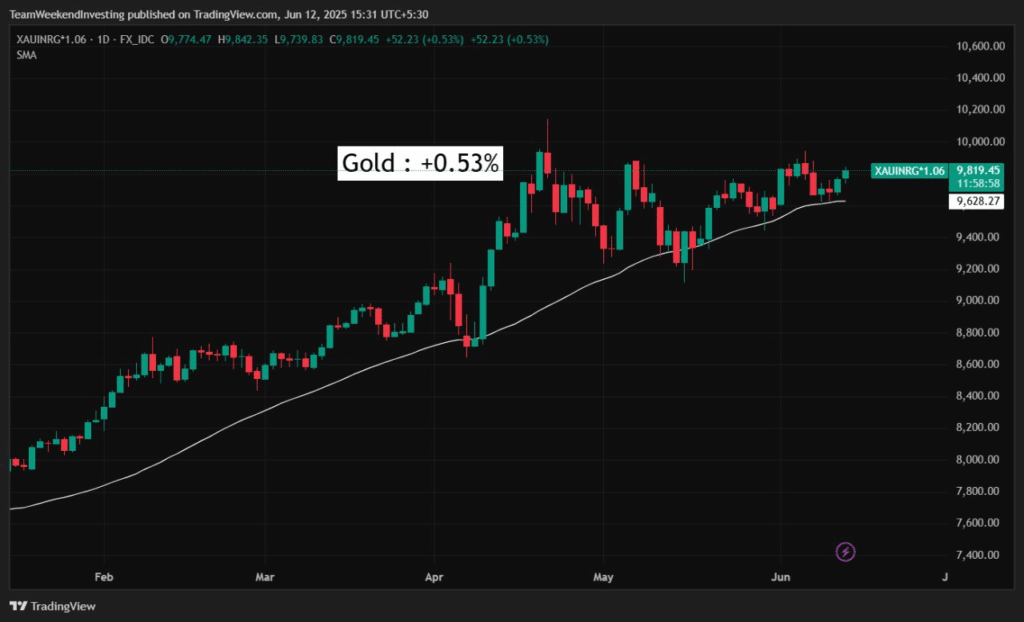
Advance Decline Ratio
Declines steadily increased throughout the day, while advances continued to taper off. By the end of the session, the advance-decline ratio stood at a stark 73 to 427.
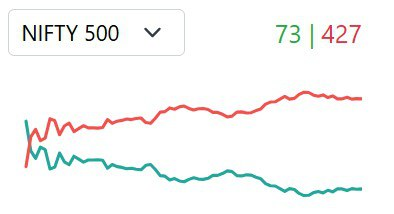
Heat Maps
The heat map was entirely red in today’s session, with barely any green or even grey boxes visible—almost everything was under pressure. Nifty Junior reflected a similar trend, though a few exceptions stood out, such as Torrent Pharma, Hyundai, and Varun Beverages. Finding stocks that weren’t in the red was a challenge.
Major names like REC, PFC, DLF, Lodha, Tata Power, Adani Power, Adani Green, and Dabur all lost ground. Notably, Asian Paints saw a significant transaction today as Reliance offloaded its stake—an event covered in a recent video analysis (Video Link).
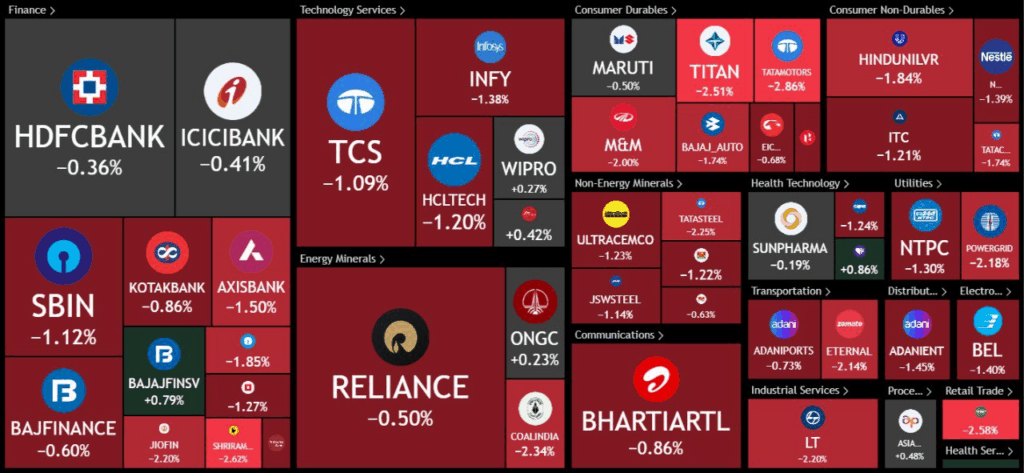

Sectoral Overview
Sectoral trends reflected broad-based weakness, with the Capital Market segment witnessing the steepest fall at nearly 3%.
Tourism, Public Sector Enterprises, and Real Estate each declined around 2%, while the Energy and Defence sectors also registered notable losses—down nearly 2% and 1.7%, respectively. These sectors led the day’s decline, falling in the range of 1.5% to 3%.
On the relatively resilient side, Pharma dipped only 0.1%. Media, Nifty Bank, financial services, private banks, and IT, all fell less than 1%, with respective declines of 0.67%, 0.78%, 0.79%, and 0.84%.
For the week, Nifty IT emerged as the best-performing sector, while Nifty India Defence in the capital market space took the hardest hit.
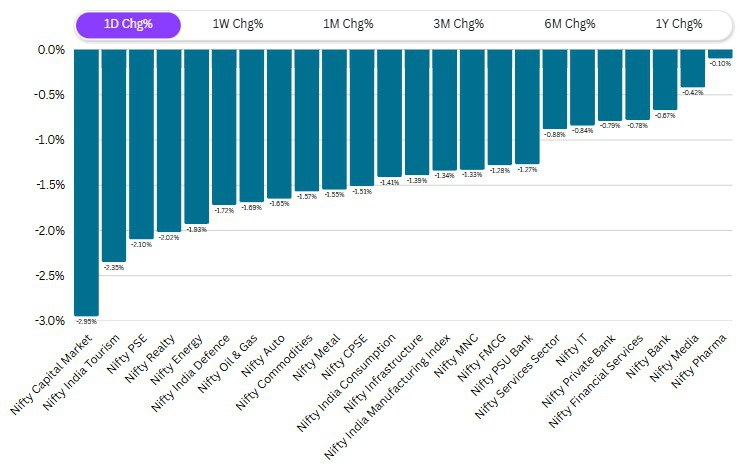
Sector of the Day
Nifty Ind Tourism
The tourism sector witnessed notable weakness, with key players like BLS, Jubilant FoodWorks, Devyani International, InterGlobe Aviation, and Chalet Hotels all losing ground.
The sector closed with a decline of 2.35%, reflecting broad-based pressure across travel, hospitality, and food service-related stocks.
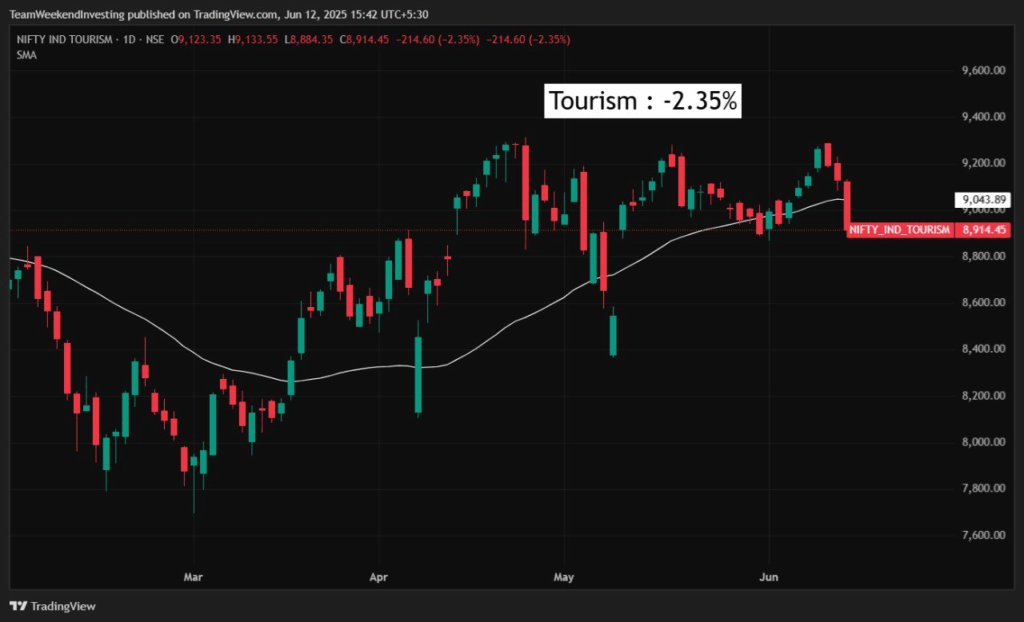

Nifty Capital Market
The capital market segment has seen a sharp reversal, erasing all its recent highs in a remarkably swift fall.
Key stocks such as CDSL, BSE, CAMS, Angel One, and Motilal Oswal have all given up ground, contributing to the broader weakness in this space. While some correction may be expected after a strong rally, the magnitude of the decline underscores the intensity of the selling pressure.
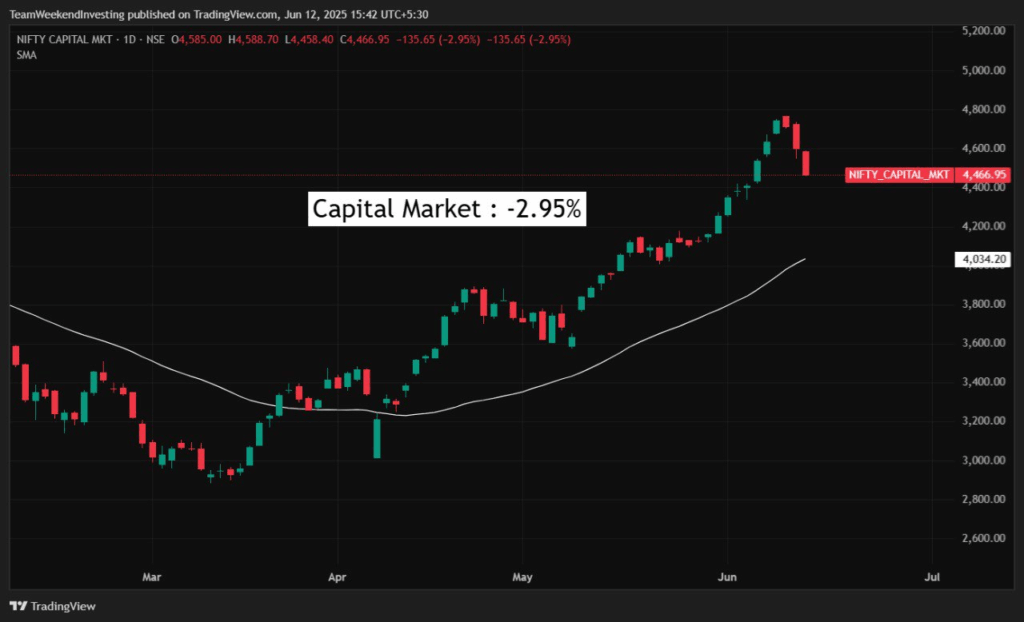
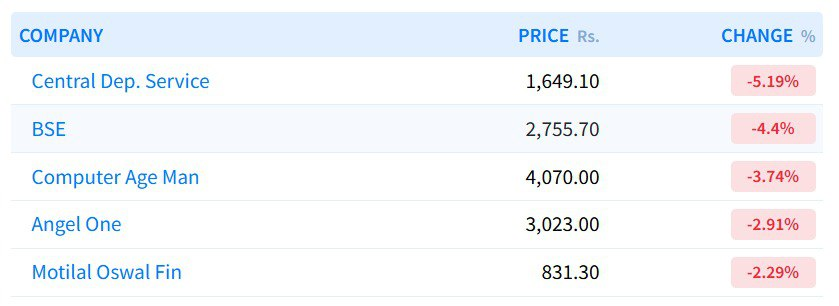
Story of the Day: Why Momentum Doesn’t Always Shine — A 6-Year Reality Check
Momentum investing is often associated with strong gains and smooth outperformance. However, expecting momentum strategies to consistently outperform across all market phases may not be realistic.
A recent study evaluating a standard absolute momentum strategy over the past six years—spanning from January 2019 to September 2024—offers valuable clarity.
The performance of the strategy was benchmarked against the Nifty 500 and segmented into five distinct phases: the pre-COVID rally and COVID crash, the post-COVID rebound, the long flat market between October 2021 and March 2023, the rally from March 2023 to September 2024, and the most recent correction and rebound.
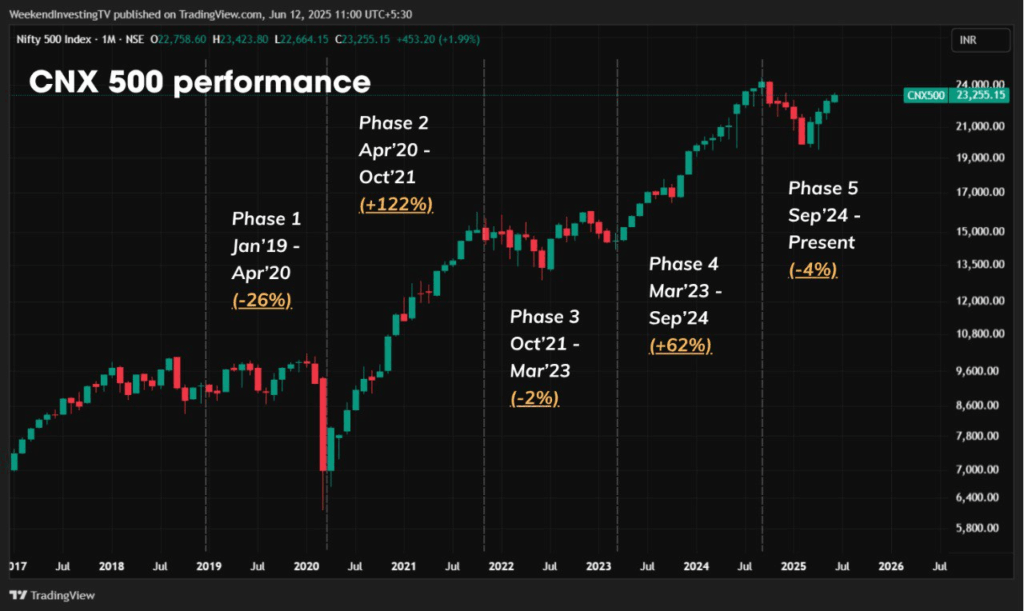
Each phase painted a unique picture of how momentum behaves in different market climates.
During the COVID-led decline, the index dropped by 26%, but the momentum strategy managed to limit losses to just 12.6%. (Check ‘Phase 1’ in Image 2)
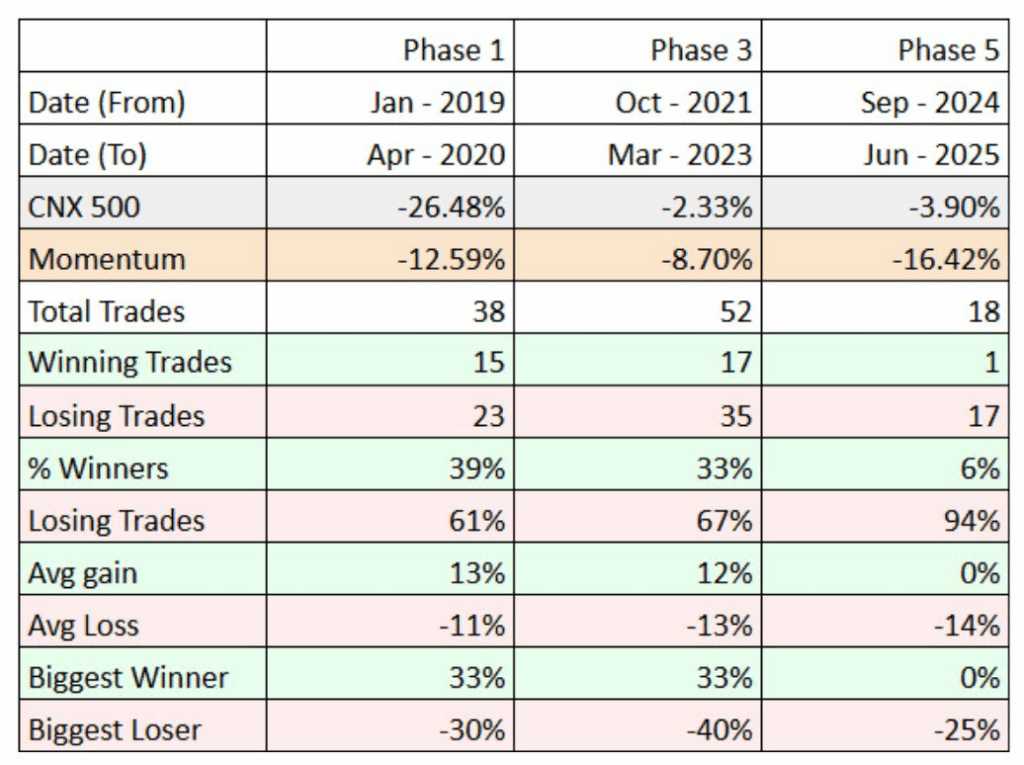
Average losses were contained, and the portfolio avoided large drawdowns, indicating that the strategy exited losers early and partially shifted to cash. In the subsequent rebound, the index soared by 122%, while the strategy delivered an impressive 245% return (Check ‘Phase 2’ in image 3). A high win rate and large average gains characterised this phase, clearly demonstrating momentum’s strength in strong upward trends.

The flat period that followed proved more challenging. While the index remained nearly flat with a 2% decline, the strategy lost about 9% (Check ‘Phase 3’ in image 2). The win rate fell, and average losses slightly exceeded average gains, leading to muted overall performance. In contrast, the following uptrend saw the strategy gain close to 100% against a 62% rise in the index (Check ‘Phase 4’ in image 3). Not only was the win rate high, but average gains per winning trade were also substantially higher than losses, again showing how momentum thrives when clear upward trends emerge.
The recent downtrend has been difficult for momentum. While the index slipped just 4%, the strategy fell by 16%, with nearly all trades turning into losses (Check ‘Phase 5’ in image 2). In such environments, momentum struggles to find clear winners and often exits trades too late or enters false trends. This phase underlines the strategy’s vulnerability in shallow corrections, where the lack of trend clarity causes misfires.
Across all phases, the broader picture shows that although about half of the trades end up being winners, their average gain significantly outweighs the average loss from losing trades. The biggest winner delivered a return of 482%, while the largest loss was 40%.
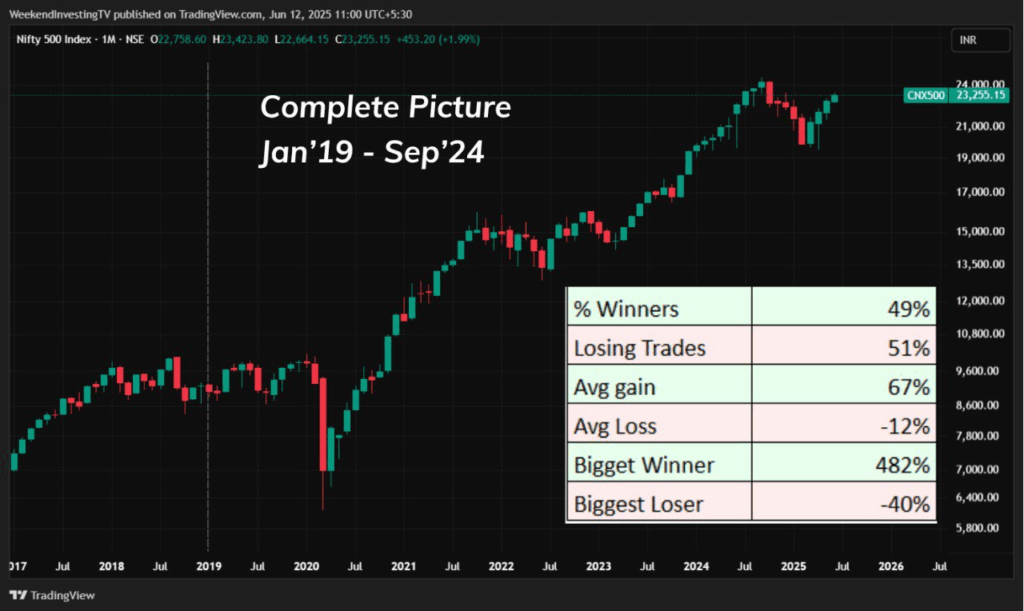
This skewed reward profile forms the backbone of momentum investing. Even when win rates hover around 50%, the few large gains are enough to outweigh a series of smaller losses
The study also highlights the nuances of momentum’s behaviour. In deep corrections, the strategy tends to move to cash, limiting downside. In shallow or quick drawdowns, it may remain invested longer and suffer. Moreover, when markets recover swiftly after a dip, the strategy may lag, as new trends take time to form and get picked up. These lags can be frustrating in the short term, especially during volatile periods.
Momentum is not built to outperform in all conditions. It thrives in strong trends and struggles when markets are indecisive or choppy. But over longer time frames, it demonstrates the ability to manage losses, cut underperformers, and ride outperformance through big winners. The key lies in patience—waiting for those strong trends to appear and letting the system run its course. For investors, this underscores the importance of focusing not on short-term hits and misses, but on staying invested through full market cycles to harness the true power of momentum.







